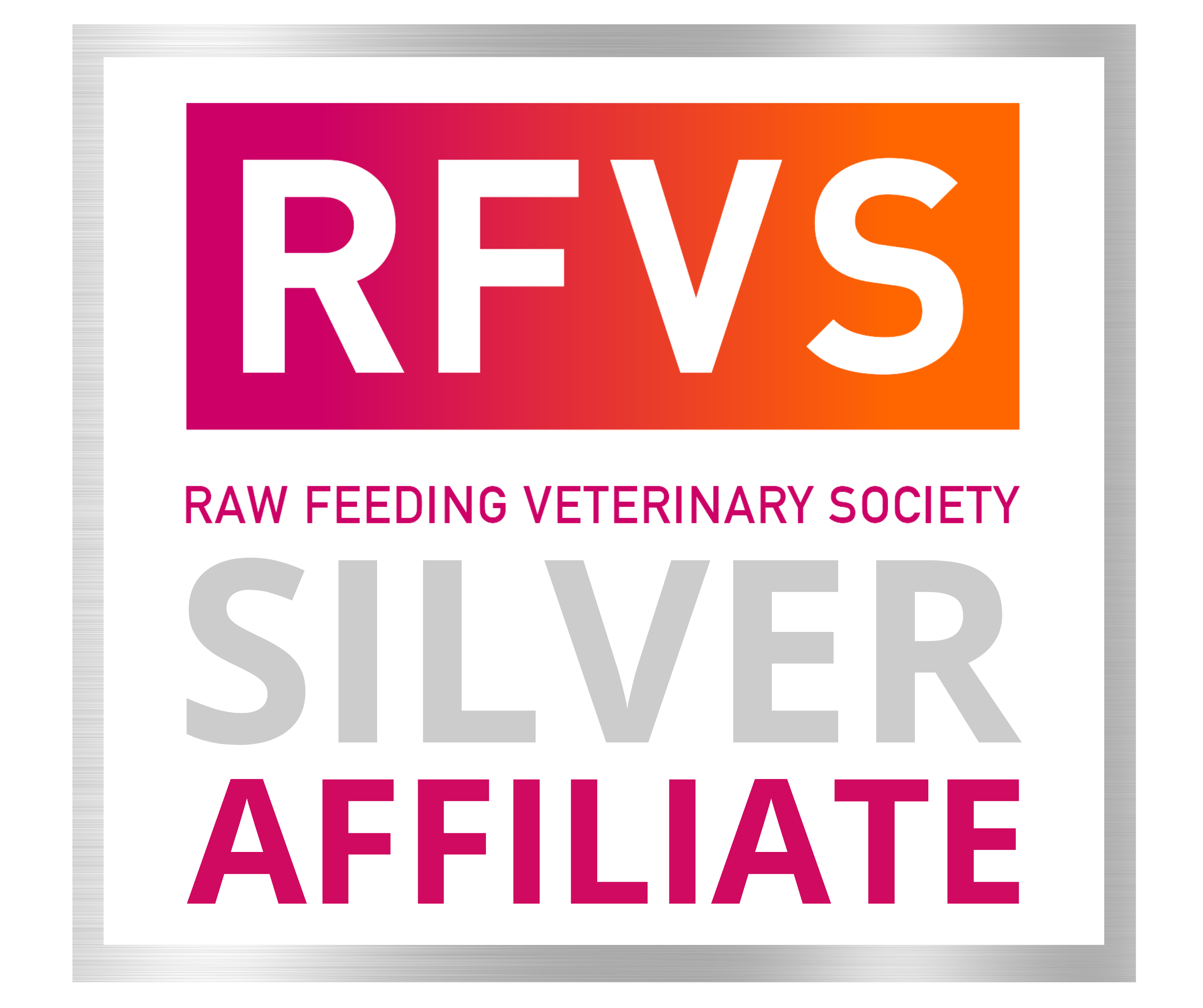Raw Nutrition Over Pills: Let Food Be Your Pet’s Medicine
Pet owners are increasingly looking for preventive health solutions for their cats and dogs. Supplements like probiotics, joint support, vitamins, and skin/coat enhancers are widely marketed, but at Raw Essentials, we believe that a carefully planned raw diet can provide most of the nutrients your pet needs - naturally, safely, and in a way evolution intended.
Whole Food Nutrition vs. Synthetic Supplements
Processed pet foods often rely on synthetic vitamins and minerals to meet AAFCO or NRC standards. While these guidelines provide a framework, they are based on limited science, small studies, and often industry-funded research. Even in nutrients like iodine, the data are inconsistent and inconclusive, particularly for cats (Wedekind et al., 2010; Zicker & Schoenherr, 2012).
Synthetic nutrients behave differently in the body than those found in whole foods. For example, phosphorus from raw meat is absorbed more slowly than inorganic phosphorus salts added to processed diets, reducing strain on kidneys (JC et al., 2019; Alexander et al., 2018). Whole-prey diets also provide bioavailable glucosamine, chondroitin, essential fatty acids, and antioxidants without the risks of over-supplementation. Human nutrition studies reinforce this point: high-dose synthetic beta-carotene supplements were shown to increase cancer risk in smokers, even though carotenoids from whole foods were protective (ATBC & CARET trials).
Why Supplements Are Often Unnecessary
A well-designed raw diet - sourced from NZ-grown animals, offering variety in prey sources (meat, organs, tripe, and bone), and free from additives — delivers naturally balanced nutrition. Most pets do not require ongoing supplementation when fed in this way. In some cases, short-term use of probiotics or fish oils may help populate the gut with beneficial microbes, reduce inflammation, and support immune function, especially in pets with compromised gut health.
For pets with chronic illness or major microbial imbalances, supplementation may be beneficial, but these are exceptions rather than the rule. Clinical experience and evolutionary logic suggest that, for most healthy cats and dogs, nature has already designed the “supplement” into whole-prey diets.
The Limitations of Processed Foods
Even processed diets claiming AAFCO compliance often fall short. Studies of commercial cat and dog foods have found nutrient deficiencies, incorrect mineral ratios, or undeclared protein sources in hypoallergenic diets (Davies et al., 2017; Hendricks et al., 1997; Ricci et al., 2013; Raditic et al., 2011; Raubenheimer et al., 2016). Many additives in processed foods can reduce protein digestibility, impair nutrient absorption, or provoke inflammation (Lerner & Matthias, 2015; Craig, 2021).
By contrast, raw diets use whole, traceable ingredients, naturally providing nutrients in forms your pet can absorb and use efficiently. Nutrient balance comes from biology rather than calculations or synthetic fortification.
Practical Tips for Optimising Nutrition Through Raw Food
-
Feed a variety of prey sources over the week (at least three different types).
-
Include meat, organs, bones, and tripe for complete nutrient coverage.
-
Avoid processed foods and treats high in starches, preservatives, and synthetic additives.
-
Monitor your pet’s body condition, coat quality, and stool health - the best indicators of nutritional adequacy.
Let Food Be the Healer
Whole-prey raw diets are more than just a meal - they are functional, species-appropriate nutrition that supports gut, joint, skin, dental, and immune health. By focusing on raw, NZ-grown, traceable ingredients, you can minimize reliance on supplements while providing your cat or dog with everything they need to thrive.
Raw Essentials has over 18 years of clinical experience guiding pet owners in feeding unprocessed, species-appropriate diets. We help pets reach their full potential naturally - because raw isn’t just food, it’s the foundation of lifelong health.
References
-
Wedekind KJ, Blumer ME, Huntington CE, et al. The feline iodine requirement is lower than the 2006 NRC recommended allowance. J Anim Physiol Anim Nutr (Berl). 2010;94(4):527-539.
-
Zicker S, Schoenherr B. Focus on nutrition: the role of iodine in nutrition and metabolism. Compend Contin Educ Vet. 2012;34(10):E1-4.
-
JC, Staunton R, Colyer A, et al. Effects of the long-term feeding of diets enriched with inorganic phosphorus on the adult feline kidney and phosphorus metabolism. Br J Nutr. 2018;121(3):1-21.
-
Alexander J, Stockman J, Atwal J, et al. Not all forms of dietary phosphorus are equal: evaluation of postprandial phosphorus concentrations in cats. Br J Nutr. 2019;121(3):270-284.
-
Davies M, Alborough R, Jones L, et al. Mineral analysis of complete dog and cat foods in the UK and compliance with European guidelines. Sci Rep. 2017;7:17107.
-
Hendricks WH, Tarttelin MF. Nutrient composition of moist cat foods sold in New Zealand. Proc Nutr Soc NZ. 1997;22:202-207.
-
Ricci R, Granato A, Vascellari M, et al. Identification of undeclared sources of animal origin in canine dry foods used in dietary elimination trials. J Anim Physiol Anim Nutr (Berl). 2013;97 Suppl 1:32-38.
-
Raditic DM, Remillard RL, Tater KC. ELISA testing for common food antigens in four dry dog foods used in dietary elimination trials. J Anim Physiol Anim Nutr (Berl). 2011;95(1):90-97.
-
Raubenheimer D, Gosper EC, Machovsky-Capuska GE, Chaves AV. Discrepancy between composition of commercial cat foods and suitability for meeting nutritional requirements. Aust Vet J. 2016;94(1-2):12-17.
-
Lerner A, Matthias T. Changes in intestinal tight junction permeability associated with industrial food additives explain the rising incidence of autoimmune disease. Autoimmun Rev. 2015;14(6):479-489.
-
Craig JM. Additives in pet food: are they safe? J Small Anim Pract. 2021;1–12.

